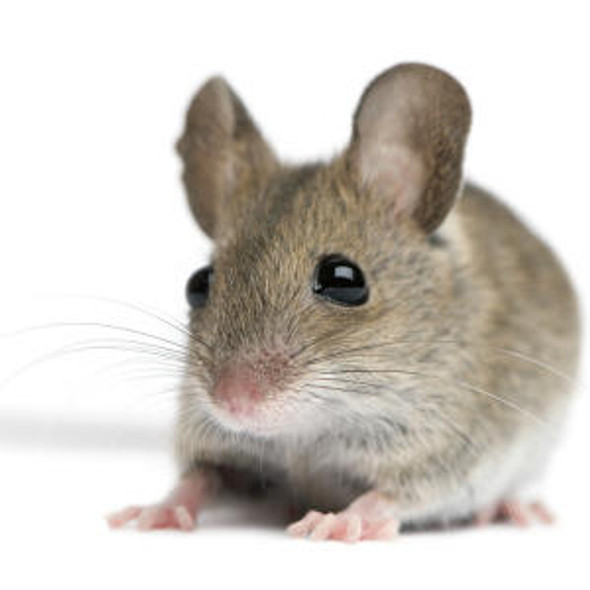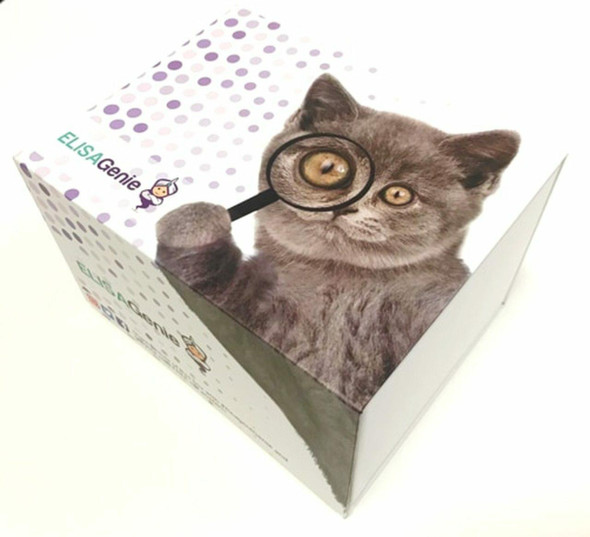Human Cell Biology ELISA Kits 3
Human TNFSF14 (Tumor Necrosis Factor Ligand Superfamily, Member 14)CLIA Kit (HUES00091)
- SKU:
- HUES00091
- Product Type:
- ELISA Kit
- ELISA Type:
- CLIA Kit
- Size:
- 96 Assays
- Sensitivity:
- 7.5pg/mL
- Range:
- 12.5-800pg/mL
- ELISA Type:
- Sandwich
- Synonyms:
- CD258, HVEML, LIGHT, LTg, TR2
- Reactivity:
- Human
- Sample Type:
- Serum, plasma and other biological fluids
- Research Area:
- Cell Biology
Description
| Assay type: | Sandwich |
| Format: | 96T |
| Assay time: | 4.5h |
| Reactivity: | Human |
| Detection method: | Chemiluminescence |
| Detection range: | 12.50-800 pg/mL |
| Sensitivity: | 7.50 pg/mL |
| Sample volume: | 100µL |
| Sample type: | Serum, plasma and other biological fluids |
| Repeatability: | CV < 15% |
| Specificity: | This kit recognizes Human TNFSF14 in samples. No significant cross-reactivity or interference between Human TNFSF14 and analogues was observed. |
This kit uses Sandwich-CLIA as the method. The micro CLIA plate provided in this kit has been pre-coated with an antibody specific to Human TNFSF14. Standards or samples are added to the appropriate micro CLIA plate wells and combined with the specific antibody. Then a biotinylated detection antibody specific for Human TNFSF14 and Avidin-Horseradish Peroxidase (HRP) conjugate are added to each micro plate well successively and incubated. Free components are washed away. The substrate solution is added to each well. Only those wells that contain Human TNFSF14, biotinylated detection antibody and Avidin-HRP conjugate will appear fluorescence. The Relative light unit (RLU) value is measured spectrophotometrically by the Chemiluminescence immunoassay analyzer. The RLU value is positively associated with the concentration of Human TNFSF14. The concentration of Human TNFSF14 in the samples can be calculated by comparing the RLU of the samples to the standard curve.
| UniProt Protein Function: | TNFSF14: Cytokine that binds to TNFRSF3/LTBR. Binding to the decoy receptor TNFRSF6B modulates its effects. Activates NFKB, stimulates the proliferation of T-cells, and inhibits growth of the adenocarcinoma HT-29. Acts as a receptor for Herpes simplex virus. Belongs to the tumor necrosis factor family. 2 isoforms of the human protein are produced by alternative splicing. |
| UniProt Protein Details: | Protein type:Membrane protein, integral; Cytokine; Inhibitor Chromosomal Location of Human Ortholog: 19p13. 3 Cellular Component: extracellular space; cytoplasm; plasma membrane; integral to membrane Molecular Function:protein binding; caspase inhibitor activity; cytokine activity; tumor necrosis factor receptor binding; receptor binding Biological Process: release of cytoplasmic sequestered NF-kappaB; T cell proliferation; T cell activation; apoptosis; T cell costimulation; T cell homeostasis; immune response; negative regulation of caspase activity; signal transduction; positive regulation of myoblast differentiation |
| NCBI Summary: | The protein encoded by this gene is a member of the tumor necrosis factor (TNF) ligand family. This protein is a ligand for TNFRSF14, which is a member of the tumor necrosis factor receptor superfamily, and which is also known as a herpesvirus entry mediator (HVEM). This protein may function as a costimulatory factor for the activation of lymphoid cells and as a deterrent to infection by herpesvirus. This protein has been shown to stimulate the proliferation of T cells, and trigger apoptosis of various tumor cells. This protein is also reported to prevent tumor necrosis factor alpha mediated apoptosis in primary hepatocyte. Two alternatively spliced transcript variant encoding distinct isoforms have been reported. [provided by RefSeq, Jul 2008] |
| UniProt Code: | O43557 |
| NCBI GenInfo Identifier: | 313104028 |
| NCBI Gene ID: | 8740 |
| NCBI Accession: | O43557. 2 |
| UniProt Secondary Accession: | O43557,O75476, Q6FHA1, Q8WVF8, Q96LD2, A8K7M2, C9J5H4 |
| UniProt Related Accession: | O43557 |
| Molecular Weight: | 22,395 Da |
| NCBI Full Name: | Tumor necrosis factor ligand superfamily member 14 |
| NCBI Synonym Full Names: | tumor necrosis factor (ligand) superfamily, member 14 |
| NCBI Official Symbol: | TNFSF14 |
| NCBI Official Synonym Symbols: | LTg; TR2; CD258; HVEML; LIGHT |
| NCBI Protein Information: | tumor necrosis factor ligand superfamily member 14; delta transmembrane LIGHT; herpesvirus entry mediator A; herpesvirus entry mediator ligand; herpesvirus entry mediator-ligand; herpes virus entry mediator ligand; ligand for herpesvirus entry mediator; tumor necrosis factor receptor-like 2; tumor necrosis factor superfamily member LIGHT |
| UniProt Protein Name: | Tumor necrosis factor ligand superfamily member 14 |
| UniProt Synonym Protein Names: | Herpes virus entry mediator ligand; HVEM-L; Herpesvirus entry mediator ligand; CD_antigen: CD258Cleaved into the following 2 chains:Tumor necrosis factor ligand superfamily member 14, membrane form; Tumor necrosis factor ligand superfamily member 14, soluble form |
| Protein Family: | Light-induced protein |
| UniProt Gene Name: | TNFSF14 |
| UniProt Entry Name: | TNF14_HUMAN |
As the RLU values of the standard curve may vary according to the conditions of the actual assay performance (e. g. operator, pipetting technique, washing technique or temperature effects), the operator should establish a standard curve for each test. Typical standard curve and data is provided below for reference only.
| Concentration (pg/mL) | RLU | Average | Corrected |
| 800 | 50569 54715 | 52642 | 52616 |
| 400 | 20909 22559 | 21734 | 21708 |
| 200 | 9962 9454 | 9708 | 9682 |
| 100 | 4179 4925 | 4552 | 4526 |
| 50 | 2201 2175 | 2188 | 2162 |
| 25 | 1089 1031 | 1060 | 1034 |
| 12.50 | 509 509 | 509 | 483 |
| 0 | 25 27 | 26 | -- |
Precision
Intra-assay Precision (Precision within an assay): 3 samples with low, mid range and high level Human TNFSF14 were tested 20 times on one plate, respectively.
Inter-assay Precision (Precision between assays): 3 samples with low, mid range and high level Human TNFSF14 were tested on 3 different plates, 20 replicates in each plate.
| Intra-assay Precision | Inter-assay Precision | |||||
| Sample | 1 | 2 | 3 | 1 | 2 | 3 |
| n | 20 | 20 | 20 | 20 | 20 | 20 |
| Mean (pg/mL) | 43.42 | 78.25 | 311.28 | 43.07 | 75.80 | 315.52 |
| Standard deviation | 5.31 | 7.90 | 23.69 | 4.67 | 6.24 | 21.77 |
| C V (%) | 12.23 | 10.10 | 7.61 | 10.84 | 8.23 | 6.90 |
Recovery
The recovery of Human TNFSF14 spiked at three different levels in samples throughout the range of the assay was evaluated in various matrices.
| Sample Type | Range (%) | Average Recovery (%) |
| Serum (n=5) | 86-98 | 93 |
| EDTA plasma (n=5) | 93-107 | 101 |
| Cell culture media (n=5) | 89-100 | 94 |
Linearity
Samples were spiked with high concentrations of Human TNFSF14 and diluted with Reference Standard & Sample Diluent to produce samples with values within the range of the assay.
| Serum (n=5) | EDTA plasma (n=5) | Cell culture media (n=5) | ||
| 1:2 | Range (%) | 98-112 | 91-103 | 96-111 |
| Average (%) | 106 | 97 | 101 | |
| 1:4 | Range (%) | 92-103 | 91-107 | 100-118 |
| Average (%) | 98 | 99 | 108 | |
| 1:8 | Range (%) | 85-98 | 89-102 | 93-106 |
| Average (%) | 91 | 95 | 99 | |
| 1:16 | Range (%) | 96-109 | 89-101 | 97-110 |
| Average (%) | 103 | 95 | 103 |
An unopened kit can be stored at 4°C for 1 month. If the kit is not used within 1 month, store the items separately according to the following conditions once the kit is received.
| Item | Specifications | Storage |
| Micro CLIA Plate(Dismountable) | 8 wells ×12 strips | -20°C, 6 months |
| Reference Standard | 2 vials | |
| Concentrated Biotinylated Detection Ab (100×) | 1 vial, 120 µL | |
| Concentrated HRP Conjugate (100×) | 1 vial, 120 µL | -20°C(shading light), 6 months |
| Reference Standard & Sample Diluent | 1 vial, 20 mL | 4°C, 6 months |
| Biotinylated Detection Ab Diluent | 1 vial, 14 mL | |
| HRP Conjugate Diluent | 1 vial, 14 mL | |
| Concentrated Wash Buffer (25×) | 1 vial, 30 mL | |
| Substrate Reagent A | 1 vial, 5 mL | 4°C (shading light) |
| Substrate Reagent B | 1 vial, 5 mL | 4°C (shading light) |
| Plate Sealer | 5 pieces | |
| Product Description | 1 copy | |
| Certificate of Analysis | 1 copy |
- Set standard, test sample and control (zero) wells on the pre-coated plate and record theirpositions. It is recommended to measure each standard and sample in duplicate. Note: addall solutions to the bottom of the plate wells while avoiding contact with the well walls. Ensuresolutions do not foam when adding to the wells.
- Aliquot 100µl of standard solutions into the standard wells.
- Add 100µl of Sample / Standard dilution buffer into the control (zero) well.
- Add 100µl of properly diluted sample (serum, plasma, tissue homogenates and otherbiological fluids. ) into test sample wells.
- Cover the plate with the sealer provided in the kit and incubate for 90 min at 37°C.
- Aspirate the liquid from each well, do not wash. Immediately add 100µL of BiotinylatedDetection Ab working solution to each well. Cover the plate with a plate seal and gently mix. Incubate for 1 hour at 37°C.
- Aspirate or decant the solution from the plate and add 350µL of wash buffer to each welland incubate for 1-2 minutes at room temperature. Aspirate the solution from each well andclap the plate on absorbent filter paper to dry. Repeat this process 3 times. Note: a microplatewasher can be used in this step and other wash steps.
- Add 100µL of HRP Conjugate working solution to each well. Cover with a plate seal andincubate for 30 min at 37°C.
- Aspirate or decant the solution from each well. Repeat the wash process for five times asconducted in step 7.
- Add 100µL of Substrate mixture solution to each well. Cover with a new plate seal andincubate for no more than 5 min at 37°C. Protect the plate from light.
- Determine the RLU value of each well immediately.






